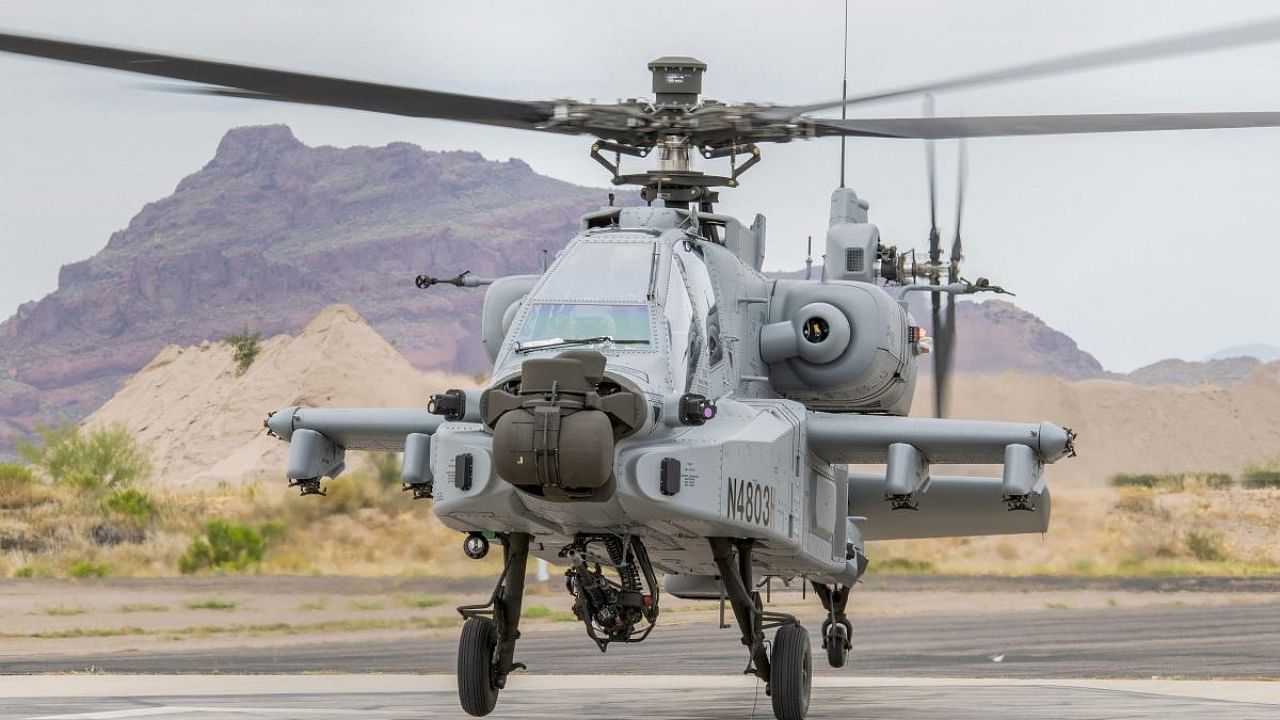
Dust kicked up from the roaring rotors of Chinook and Apache helicopters on a summer’s day as they took off with the commandos from the airfield. The commandos were being inserted into enemy territory to kill or capture a person designated as a “high-value target” (HVT). The commandos were to be landed near the village where the HVT was suspected to be, sneak in and neutralise him.
“Operation Red Wings” in June-July 2005 was doomed. The team of four assaulters was spotted, surrounded and all barring one were killed. The lone soldier survived with severe wounds after another sophisticated search-and-rescue operation.
There are two points in this story. First, Operation Red Wings aimed at a Taliban commander Ahmed Shah in Afghanistan’s Kunar province involved the US Marines, Navy SEALS, the air force and the army. (SEAL is short for sea, air and land).
Second, the airfield was Bagram, roughly 40 km north of Kabul and easily the largest military base from which multiple US and NATO forces were operating for 20 years. On Friday, the last of the US forces vacated the 1950s-era base built by the Soviets. It was almost immediately attacked by unknown persons suspected to have connections with the Taliban or were dependent on the base for jobs.
Six years after Operation Red Wings, SEAL Team Six in Operation Neptune Spear took out “Jackpot” Osama Bin Laden in a compound in Pakistan’s Abbottabad and gave him, in full or parts, a sea burial from the fo’c’sle of the USS Carl Vinson Aircraft Carrier in the North Arabian Sea.
In them, Red Wings and Neptune Spear illustrate how the US’ integrated battle operations are conducted at a tactical level. Yesterday, July 2, as the US troops pulled out of Bagram (with portents of another blowback in the region), India’s top military commanders were on live television practically showcasing New Delhi’s contortions over the idea of integrated theatre commands.
Most modern militaries have integrated their forces under commands structured to harness their components optimally. That is not the case with India.
The one glaring example: China has a singular command – the Western Theater Command (WTC) – responsible for its frontiers with India. That has been the case since 2012. That has been the case all through 2020 and till date as Indian and Chinese soldiers clawed and clubbed one another in Eastern Ladakh’s Galwan.
India has seven different commands opposite China’s WTC – the northern, western (that includes the ‘Sugar sector’ part in Uttarakhand), central and eastern army commands, and the western, central and eastern air commands. To add to this scenario, there are elements of the intelligence agencies that report to the Union Home Ministry, the Aviation Research Centre (ARC), the Special Frontier Force (SFF) and the R&AW (Research and Analysis Wing) that report to the Cabinet Secretariat.
Despite, or because of this, there is the poverty of plenty that failed to detect and react to China’s capture of Indian territory north and south of the placid Pangong Tso.
Cutting through jargon and theory, there are basically two models of integrating militaries that are most visible. There is the US example, one that encompasses the globe divided into theatres. In this concept, India is the US’ Pacific Command Area of Responsibility (PACOM AoR). The wars in Afghanistan and Iraq are in the AoR of the US’ Central Command. The PACOM is usually helmed by an Admiral. Each of the US’ theatre commands is headed by a four-star general or equivalent from the air force/navy.
Then there is the Pakistan/China model in which the army is supreme. Thus China has a Peoples’ Liberation Army Navy (PLAN) and a PLAAF (air force). In this model, the navy and the air force are important to the extent that they service the land forces.
The US’ model is tailored for expeditionary warfare across the world. The China/Pak model is more homebound though the PLAN has been expanding its “sea legs” over the years.
In both models, the integration of forces post the Second World War and towards the end of the Cold War was possible because of clear political will and directions.
The creation of integrated theatres is easily the biggest reform in the military because it restructures the chain of command. This means that, for the US, the Supreme Commander (the President) acting through the defense secretary directs the combatant commanders – the theatre commanders who are four-star generals. In China, the PLA is, in any case, a wing of the Communist Party.
In India, when General Bipin Rawat was made Chief of Defence Staff (CDS) in January 2020, he was also given a brief: “Facilitation of restructuring of Military Commands for optimal utilisation of resources by bringing about jointness in operations, including through the establishment of joint / theatre commands.”
After General Bipin Rawat stated that the task of the air force and the navy was to “support” the land forces, it raised a fundamental question: Are the CDS and his army laying the groundwork for an ancient, outmoded way of fighting in the 21st Century (Vedic warfare, if you will) when organised violence is multidimensional?
Integration needs political deadlines in a manner that enabled the Goldwater-Nicholls Act of 1986. That requires the comprehension that radars do indeed see through cloudy skies. But, even the US’ military integration was made possible by an oily actor of B-grade Hollywood flicks, Ronald Reagan.
(Sujan Dutta is an independent journalist based in Delhi)
Disclaimer: The views expressed above are the authors’ own. They do not necessarily reflect the views of DH.